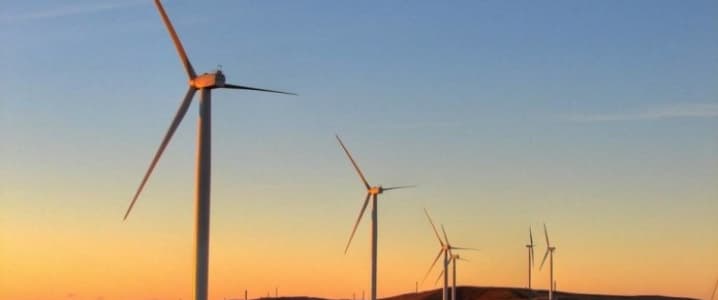Australia is posed to build an electricity network with 100 percent renewable energy, that is both affordable and secure, and that utilizes existing technology. The Australian National University has published a study detailing how a zero-emissions grid would work. The grid would rely on wind and solar technology, but the innovation comes from the pumped hydro storage, which would support the network. A move like this would eliminate the need for coal and gas power.
As many aging coal-fired power stations close (on which 2/3 of Australia’s electricity relies) demand for new types of energy is spiking. Professor Andrew Blakers at the ANU believes that wind and solar energy could be that replacement. The short-term off-river pumped hydro energy storage (STORES) utilizes reservoirs at different altitudes to both store and generate power. This system would provide Australia with a cheap, stable, zero-emissions network that can support a larger share of renewable energy.
The details of the report estimate that wind and solar energy would contribute 90 percent of total annual electricity. Hydroelectricity and biomass sources would supplement the remaining 10 percent. This energy mix is based on the widely-spread wind and energy sources, and leverages the different weather system available in Australia. The pumped hydro storage system is the mechanism by which supply and demand will be managed, as these weather systems are notoriously unreliable at providing the appropriate amount of energy at any given time. The hydro-pump can store the energy produced during peak generation hours, and then distribute it as needed.
The publication by the ANU follows the announcement by EnergyAustralia (a private electricity generation company) last week that it will begin research into an off-river pumped hydro venture, to be located at the top of South Australia’s Spencer Gulf. As it stands, the majority of Australian land is not near a river to appropriately utilize hydro power, which is why this source has been largely ignored. However, the researchers at ANU are finding thousands of sites across north Queensland, down the Great Dividing Range, across South Australia, Tasmania, and Western Australia that are potential locations for the system. The hydro-pump stations do not need a river to be operational, making them much more feasible. Related: Trump Needs Higher Oil Prices For His Infrastructure Plan
According to the study, this system would see energy costs drop from $93 per megawatt hour as it was in 2016 to $75 per megawatt hour by the 2020s. The government’s Renewable Energy Agency has invested $450,000 into the research, but acceptance across the board does not seem likely yet. Lack of bipartisan support for these types of energy projects and research could hinder the implementation of such a system in Australia any time soon.
However, we need not trust the ANU’s numbers alone. A recent report published by Bloomberg New Energy Finance (BNEF) supports the case for the shift to renewable energy. The report shows that the Levelized Cost of Energy (LCoE) to build new ultra-supercritical coal-fired power is much more expensive than that to build new wind, solar, and combined-cycle gas infrastructure. The coal-fired power is anywhere from $34 to over $100/MWH more expensive than the aforementioned alternatives.
This is extremely important to Australia, as many coal-fired stations will reach their operating life-span within the next 15 years. They will have to close regardless of any environment or emissions-based concerns.
By Michael McDonald of Oilprice.com
ADVERTISEMENT
More Top Reads From Oilprice.com:
- Oil Prices Under Pressure From Record Breaking Inventories
- U.S. Shale Production Growing At An Unprecedented Pace
- IEA: Huge Oil Price Spike Inevitable



















"Australia is posed to build an electricity network with 100 percent renewable energy, that is both affordable and secure, and that utilizes existing technology. The Australian National University has published a study detailing how a zero-emissions grid would work. "
You will no doubt revise your article to say what you intended to say, but the truth is that Australia is "posed" as in a poseur.
Intelligent people understand that "research studies" are a dime a dozen, and results typically reflect the intent of whoever financed the study. The real world tells us that South Australia is already vulnerable to blackouts and brownouts from its current exposure to unreliable energy sources such as wind and solar.
Intermittency of wind and solar requires an 89% backup by reliable sources of power such as nuclear, coal, natural gas, or hydro. Australia is not a great hydro location, and hydro is also dependent on weather -- rainfall -- which is not predictable. Venezuela, for example, is suffering from drought and its hydro powe cannot be called upon at will.
There is no substitute for the more reliable sources of affordable and high quality power. Wind and solar are unreliable, low quality, diffuse and unpredictable energy sources. From moment to moment wind and solar can surge, disappear, surge again, disappear again, in an eternally frustrating and impoverishing orgy of unreliability, with excess alternating with scarcity.